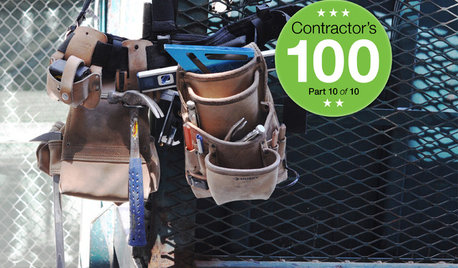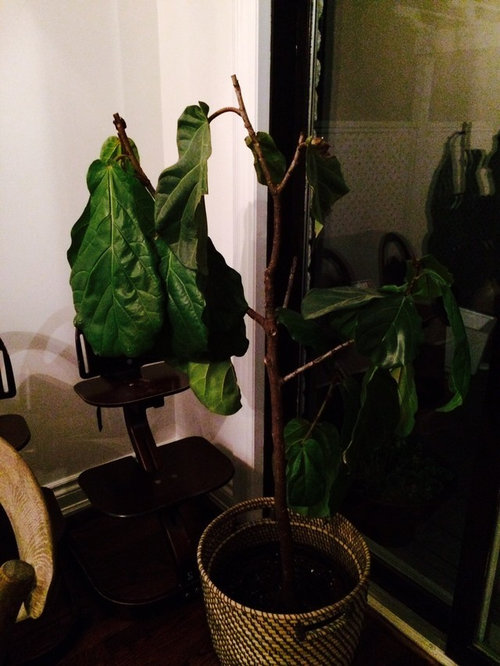Repotted my ficus and things went terrible wrong
OLTHEM
9 years ago
Related Stories

LIFEPortrait of a Terrible Housekeeper
Even in hair-raising tales and harebrained organizing schemes, there's something we can learn
Full Story
REMODELING GUIDESWhy Marble Might Be Wrong for Your Bathroom
You love its beauty and instant high-quality appeal, but bathroom marble has its drawbacks. Here's what to know before you buy
Full Story
REMODELING GUIDESContractor's Tips: 10 Things Your Contractor Might Not Tell You
Climbing through your closets and fielding design issues galore, your contractor might stay mum. Here's what you're missing
Full Story
FUN HOUZZ10 Things People Really Don’t Want in Their Homes
No love lost over fluorescent lights? No shocker there. But some of these other hated items may surprise you
Full Story
MOST POPULAR10 Things to Ask Your Contractor Before You Start Your Project
Ask these questions before signing with a contractor for better communication and fewer surprises along the way
Full Story
LIFEThe Beautiful Thing About Dad's Chair
My father had his own spot in the house. His father had his own spot. Now I have mine
Full Story
CONTRACTOR TIPS10 Things to Discuss With Your Contractor Before Work Starts
Have a meeting a week before hammers and shovels fly to make sure everyone’s on the same page
Full Story
MOVINGHome-Buying Checklist: 20 Things to Consider Beyond the Inspection
Quality of life is just as important as construction quality. Learn what to look for at open houses to ensure comfort in your new home
Full Story
MOST POPULAR11 Things to Expect With Your Remodel
Prepare yourself. Knowing what lies ahead during renovations can save your nerves and smooth the process
Full Story
GARDENING FOR BUTTERFLIESGardening for the Bees, and Why It’s a Good Thing
When you discover how hard bees work for our food supply, you may never garden without them in mind again
Full StoryMore Discussions











patchyjack
OLTHEMOriginal Author
Related Professionals
Fort Lee Landscape Architects & Landscape Designers · Bergenfield Landscape Contractors · Deer Park Landscape Contractors · Edinburg Landscape Contractors · Fuquay-Varina Landscape Contractors · Golden Landscape Contractors · Goodlettsville Landscape Contractors · Hoffman Estates Landscape Contractors · La Verne Landscape Contractors · Lake Saint Louis Landscape Contractors · Lake Worth Landscape Contractors · Mequon Landscape Contractors · New Providence Landscape Contractors · Salem Landscape Contractors · West Covina Landscape ContractorsStarlight Botanist
greenman28 NorCal 7b/8a
OLTHEMOriginal Author
patchyjack
OLTHEMOriginal Author
pirate_girl
OLTHEMOriginal Author
patchyjack
MsGreenFinger GW
OLTHEMOriginal Author
patchyjack
OLTHEMOriginal Author
OLTHEMOriginal Author
tapla (mid-Michigan, USDA z5b-6a)
OLTHEMOriginal Author
OLTHEMOriginal Author
tapla (mid-Michigan, USDA z5b-6a)
OLTHEMOriginal Author
tapla (mid-Michigan, USDA z5b-6a)
OLTHEMOriginal Author